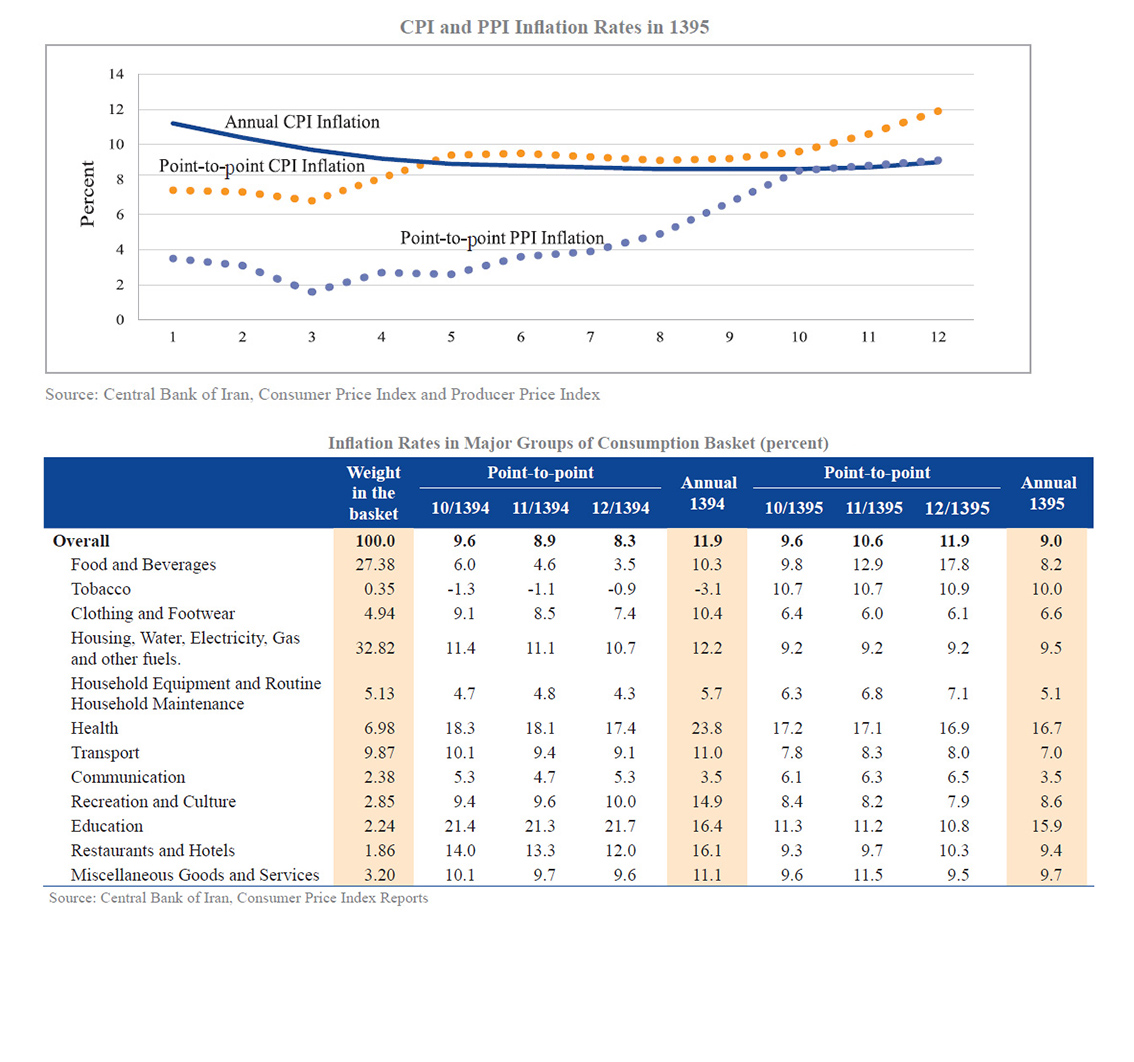In its latest quarterly report on Iran’s economic performance, the Middle East Bank has reviewed changes in prices and inflation.
The inflation rate in Iran fell below 10% for the first time in about a quarter century during the last fiscal year that ended March 20, 2017.
After a downtrend starting in Dec. 21, 2016, the point-to-point CPI inflation rate touched 6.8% in May 2016 and then reversed course to reach 11.9% in March 2017 to register its maximum during this year.
As for the average annual inflation rate, after three months of remaining at 8.6%, it gradually increased to register a 9% inflation rate in the last Iranian year. That was the first time in the past 26 years that the country experienced a single-digit inflation rate.
An examination of the monetary aggregates reveals that by Jan. 19, 2017, liquidity (M2) grew by 26.0%, quasi-money by 25.8% and money (M1) by 27.8%. While the inflation rate was decreasing continuously during March 2013-15, M2 liquidity and quasi-money experienced high growth rates while money grew much less and the rise in inflation rate was mostly attributed to changes in M1 money.
Given the faster growth rate of money mentioned earlier, further increases in CPI in the early months of the Iranian year started March 2017 is plausible. The following graph exhibits CPI and PPI inflation rates during the 12 months of 1395.
As can be seen in this graph, the point-to-point PPI inflation, that is a precursor to CPI inflation, started an increasing trend from Aug. 22, 2016, and eventually reached 9.1% by March 2017, indicating an expected rise in the point-to-point CPI inflation in the coming months.
The degree to which PPI inflation rates affect the CPI inflation rates is positively correlated with the share of domestically produced goods and services in the consumption basket. This calls for the differentiation of price changes in the two categories of tradable and non-tradable goods. The point-to-point inflation rate of tradable goods increased from 7.5% to 10% during Dec. 20, 2016-Feb. 18, 2017, helped by rial’s depreciation against foreign currencies in the fall and winter of the current Iranian year. But the point-to-point inflation rate of non-tradable goods increased by only 0.2% during the same period from 10.9% to 11.1%.
Looking at price developments in various categories of the consumption basket of goods and services, the point-to-point inflation rate in “Food and Beverages”, which is the second largest group in the basket, jumped in the last two months of the year from 12.9% to 17.8%.
On the other end, the point-to-point CPI inflation in the “Miscellaneous Goods and Services” fell during the last two months of the year from 11.5% to 9.5%.
The point-to-point inflation rate in “Housing, Water, Electricity, Gas and other Fuels” with the highest weight in the basket remained at 9.2% during the last three months of the year.
Accordingly, the rise in point-to-point inflation in “Food and Beverages” was the main cause of the rise in inflation in March 2017.


